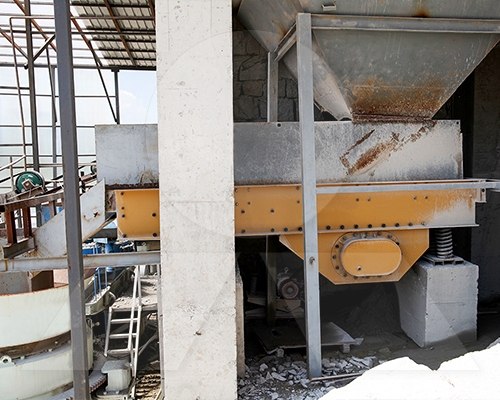Vibrating Feeders Tailored for Crusher Sizes: Enhancing Efficiency in Material Handling
Vibrating feeders are crucial components in the material handling process, particularly in conjunction with crushers in various industries, including mining, construction, and recycling. The right vibrating feeder can significantly enhance the performance of a crusher by ensuring a steady and controlled flow of materials. This article explores the importance of selecting vibrating feeders that are specifically designed for different crusher sizes, as well as the benefits they offer to operational efficiency.
Key Features of Vibrating Feeders for Crushers
- Size Compatibility
One of the primary factors in choosing a vibrating feeder is its compatibility with the size and capacity of the associated crusher. Feeders designed for specific crusher dimensions ensure that the material is delivered at the optimal rate and in the right size for effective processing. This compatibility helps prevent blockages and ensures that the crusher operates smoothly, maximizing productivity. - Adjustable Feed Rates
Many modern vibrating feeders come with adjustable feed rates, allowing operators to tailor the flow of materials according to the requirements of the crushing process. This flexibility is particularly beneficial when dealing with different types of materials or varying operational conditions, as it enables fine-tuning of the feeding process to achieve optimal performance. - Robust Construction
Vibrating feeders designed for use with crushers are often built to withstand heavy loads and harsh conditions. Their robust construction ensures durability and longevity, minimizing the need for frequent maintenance and replacements. This resilience is crucial in high-demand environments where equipment must endure significant wear and tear.
Advantages of Using Vibrating Feeders Tailored for Crushers
- Enhanced Crusher Performance
A well-matched vibrating feeder can significantly enhance the overall performance of a crusher. By providing a consistent flow of material, it helps to optimize the crushing process, reducing downtime and increasing throughput. This efficiency leads to higher production rates and improved profitability for operations. - Reduction in Material Waste
Properly sized vibrating feeders minimize the risk of material spillage and waste during the feeding process. By controlling the flow and ensuring that only the necessary amount of material is fed into the crusher, these feeders help maintain a clean working environment and reduce costs associated with material loss. - Improved Safety
When a vibrating feeder is appropriately sized for its corresponding crusher, it helps to mitigate risks associated with overloading and equipment failure. This contributes to a safer working environment by minimizing the potential for accidents related to equipment malfunctions or material blockages. - Operational Versatility
Vibrating feeders can be designed to accommodate various materials and operational requirements, making them versatile additions to any crushing operation. Whether handling aggregates, minerals, or recycling materials, these feeders can be adapted to meet the specific needs of the process, enhancing overall efficiency.
Conclusion
Vibrating feeders tailored for specific crusher sizes play a vital role in optimizing the material handling process in various industries. By ensuring compatibility, providing adjustable feed rates, and offering robust construction, these feeders enhance crusher performance, reduce material waste, and improve safety on-site. Investing in the right vibrating feeder can lead to significant operational benefits, making it a critical component for businesses looking to increase productivity and efficiency in their crushing operations.
- > Jaw Crusher Solutions for the Crushing Challenge of High-Moisture Clay Ore in Indonesia
- > Innovative Mobile Crusher with 200 Tons Per Hour Capacity
- > Utilizing Cone Crushers for Gravel Crushing: Efficiency and Advantages
- > Usage and Maintenance of Impact Crushers
- > Jaw Crusher Optimization for Indonesian High-Moisture Clay-Type Nickel Ore
- > Ultrafine Processing of Tailings Slag with Cone Crushers
- > Environmental Impacts of Chromite Mining and the Role of Crawler Mobile Crushers in Indonesia
- > Top Mobile Crushing Solutions for Small-Scale Gold Mining Operations in Africa
Hot Product


Online




Message

